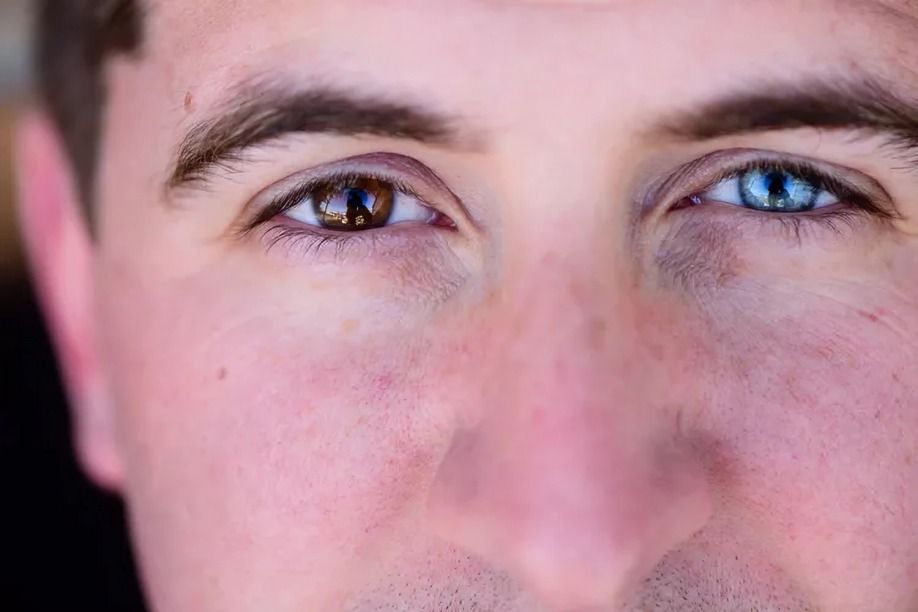
Our eyes are incredible organs that allow us to see the world in all its beautiful colors and details. They work like tiny cameras, capturing images and sending them to our brains to understand what we're looking at. From the bright blue sky to the green grass, our eyes help us enjoy the wonders around us. Let's dive into some fascinating vision facts for kids and learn how our eyes work! 1
You don’t just see with your eyes—you see with your brain, too! Your eyes capture light and send the images to your brain. Interestingly, eyes see everything upside down, and it's the brain that flips the images right-side up, making sense of what you see!2
On average, you blink approximately 15-20 times every minute. Over a day, this adds up to thousands of blinks. Blinking helps keep eyes moist and clean by spreading tears across the surface.3

The human eye can see details as small as 100 microns. Remarkably, Veronica Seider from the University of Stuttgart had 20 times better vision in 1972. So, if you're slacking, she might be watching you from afar!
Eyes have an incredible ability to heal quickly. In fact, a minor corneal scratch can mend itself in just about 48 hours. This rapid recovery is like your eyes' superpower, keeping your vision clear and sharp!4
Your eyes are capable of perceiving about 10 million different colors. This incredible range allows you to appreciate the vividness of your environment. It enhances your ability to distinguish between various hues and shades.5
The human eye can differentiate approximately 500 shades of grey. This ability is particularly useful in low-light situations, where color perception diminishes. It helps you see details even when the light is insufficient.6
Eye development begins just two weeks after conception. From this early stage, the eyes continue to grow and refine until birth. This ongoing development ensures that your vision becomes fully functional at the time of your arrival.7
The first successful eye surgery is credited to ancient Egyptian physicians around 2000 BCE, who performed procedures to treat cataracts using a technique called couching. This early method involved displacing the cloudy lens to restore vision.8
The human eye can judge positions with impressive precision, between 3 and 5 seconds of arc. In 1984, Dr. Dennis M. Levi showed this by accurately identifying a thin green line within 0.85 seconds of arc, about 6 mm at 1.6 km.9
Your eyes are sensitive enough to detect a candle flame from approximately 1.6 miles (2.6 kilometers) away. This impressive sensitivity demonstrates the strength of human vision. It underscores the eyes' ability to detect even the faintest light sources.10
Each of your eyes measures about 2.5 cm (1 inch) across. This size remains consistent from birth through adulthood. Despite their small size, the eyes are highly complex organs with intricate functions.11
Babies are typically born with blue or grey eyes due to low pigment levels. As they grow, their eye color may change as pigment accumulates. This natural process leads to the development of the final eye color.12
People with brown eyes have a higher concentration of pigment in their irises. This increased pigment provides additional protection from the sun's harmful UV rays. It helps reduce the risk of light-induced damage to the eyes.13

Heterochromia is a condition where a person has two different colored eyes. This unique trait can be congenital or acquired. It adds an extraordinary dimension to the individual's appearance and makes them stand out.
Researchers are developing advanced bionic eyes that can restore vision to the blind. These devices use a combination of microelectrodes and retinal implants to convert visual information into electrical signals, which stimulate the remaining healthy retinal cells.14
The cornea of a shark is astonishingly similar to that of a human and has even been used in eye surgeries! This remarkable similarity allows shark corneas to be used as substitutes in medical procedures. 15
Most people have a dominant eye, similar to having a dominant hand. This eye is more precise and preferred for detailed visual tasks, like aiming or focusing, which can enhance visual coordination and accuracy.16
Your eyes can focus on up to 50 different objects every second. This rapid focusing ability enables you to take in and process visual information quickly. It's essential for reacting to changes and navigating your environment effectively.17
The octopus boasts exceptional underwater vision, with eyes capable of detecting polarized light. Its sophisticated lens system enables it to focus on objects at various distances, enhancing its ability to navigate and hunt in the ocean's depths.18
People typically read 25% slower on screens compared to paper. Staring at a computer reduces blinking, leading to eye strain and fatigue. This slower pace and tired eyes are common side effects of prolonged screen use.19


